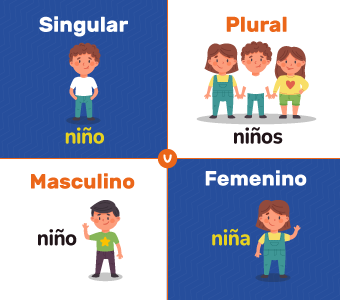It is known that nouns denote a person, a thing, an animal, a place, or an idea. In Spanish every noun, whether it is living or non-living, has gender masculine or feminine. However, it is important to clarify that this gender is related to grammar, known as grammatical gender; which is a mark of coherence between words and is connected to society’s cosmovision and the language.
Coherence between nouns and gender
Therefore, we should take into account that there isn’t always a clear agreement between noun suffixes and grammatical gender. Take for example “mano” which ends in -o, it is supposed to be masculine but actually is feminine (la mano). Another example can be “mapa”. It looks like feminine, but in fact is masculine (el mapa), so not every noun that ends in -a is feminine and not every noun which ends in -o is masculine.
Non-living things and gender
In addition to this, it can not be easily predicted the gender of non-living things such as “nieve” (snow), “papel” (paper), “celular” (mobile phone) or “tenedor” (fork). In fact, there aren’t any specific grammar principles to determine the gender of this type of nouns. However, the Spanish definite articles like “el”, “la”, “los” and “las” can be clues as to whether a noun is masculine or feminine. By way of example, we could say: “la nieve”, “el papel”, “el celular” o “el tenedor”.
Now that you are familiar with gender in Spanish, you can rely on Bright Lingua so as to expand your knowledge of this language.


